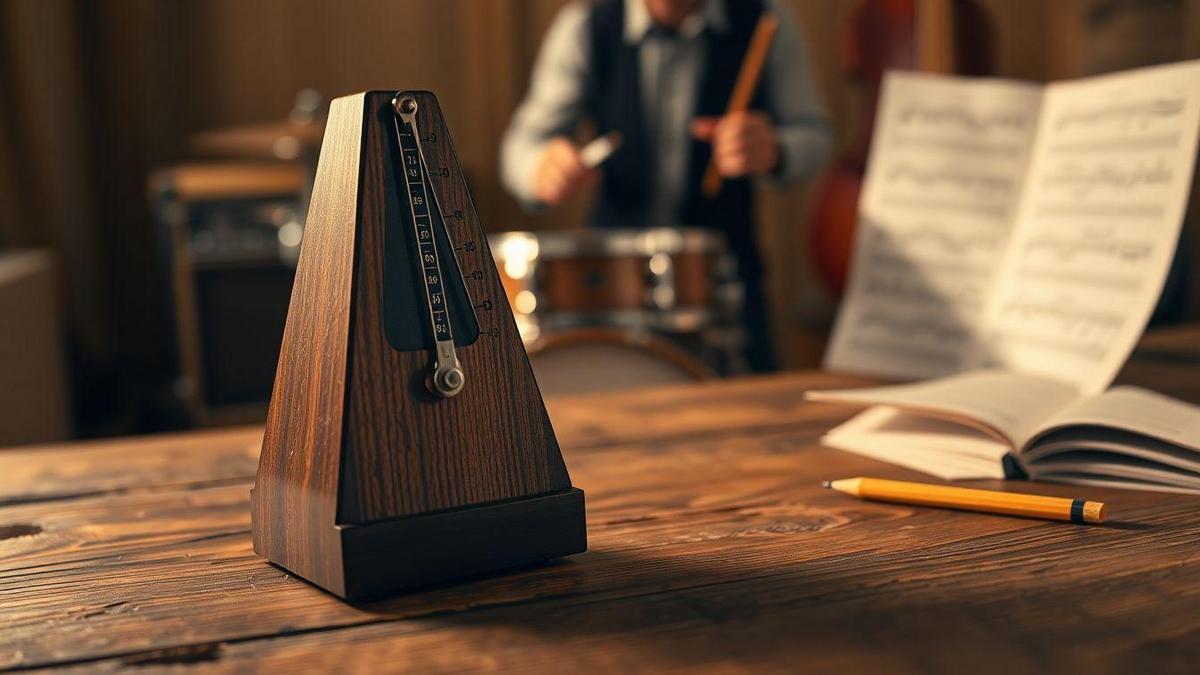Five theory basics every beginner should know

I’ll show a simple, practical path: read the staff and clefs, split music into notes and beats, make scales and keys feel natural, train your ear for intervals and chords, and use rhythm and melody steps you can practice daily. These are the 5 theory basics every beginner should know — small, focused moves that speed up writing and playing. If theory feels intimidating, the piece Is music theory really that scary? reframes it as a tool you can learn in tiny, usable steps.
Key takeaway — how to use these 5 theory basics every beginner should know
- Learn one clear idea at a time.
- Note the assumptions (key, tempo, instrument).
- Use simple tests (sing, play, record).
- Apply small, repeatable drills daily.
- Evidence matters: check progress by recording and comparing.
Notes & pitch: reading the staff and clefs

Think of the staff as a five-rung ladder; each line/space is a note. Clefs (treble, bass) tell you which notes the lines represent. Middle C sits between clefs; ledger lines extend the staff. For a practical walkthrough on reading notation and chord symbols together, see this primer on how to read chords and sheet music. For a neutral reference on standard notation, see Basics of staff, clefs, and notation.
Quick method to read notes:
- Spot the clef.
- Reference middle C or a familiar note.
- Count lines/spaces; check accidentals.
- Say the note and play/sing it.
Practical tip: imagine stepping up/down from middle C to avoid getting lost.
Tokenization: splitting music into notes and beats
- Tokenization = breaking music into notes, rests, beats, and measures.
- Time signature (e.g., 4/4) tells beats per measure; note values (whole, half, quarter, eighth) tell duration.
How to tokenize a bar:
- Read the time signature.
- Tap the beat (if you need help with steady time, try techniques from using a metronome without losing patience).
- Label sounds as note values or rests.
- Group into measures.
Practice: clap four times for 4/4, then sing/play the notes while keeping the clap.
Scales & keys: major and minor made simple

A scale is a set of notes that creates a home (tonic). Major sounds bright; minor sounds darker. For clear explanations and exercises, check scales explained in plain English. For formal scale formulas and visual examples, see Major and minor scale patterns.
Patterns:
- Major: W W H W W W H
- Natural minor: W H W W H W W
Start on C major and A minor (same notes, different feel). The tonic (1) is home; the dominant (5) creates tension; the subdominant (4) moves away.
Practice one scale in one key daily:
- Warm up: slow up/down (2 min).
- Different rhythms (3 min).
- Arpeggios (3 min).
- Improvise 8 bars in the scale (5 min).
- Write a 4-chord loop using tonic and dominant.
Keep a metronome and a short practice log.
Intervals: hearing distances between notes

An interval = distance between two notes. Recognizing intervals helps you sing harmonies, build riffs, and identify motifs. This is one of the core 5 theory basics every beginner should know. For examples and ear anchors, see musical intervals made simple. You can also use focused references to practice and recognize musical intervals with names, sizes, and hearing anchors.
Start with these:
- Unison (same), Second (small step), Third (harmonic color), Fifth (open/power), Octave (same note, different register).
Drill: clap intervals and name them aloud
- Play a root note.
- Play/sing the next note and clap.
- Say: unison, second, third, fifth, octave.
- Repeat up/down with different roots (sets of five, three correct in a row).
Use familiar songs as anchors for each interval.
Chords & harmony: triads, sevenths, and common shapes

A triad = root third fifth. Add a seventh for color (maj7, dom7, min7). Learn common shapes on your instrument and practice switching slowly. For a beginner-friendly guide to chord functions and shapes, read what chords are and why they matter and a beginner’s guide to harmony.
Common chord types (example in C):
- Major: C–E–G (1–3–5)
- Minor: C–Eb–G (1–b3–5)
- Diminished: C–Eb–Gb (1–b3–b5)
- Dominant7: C–E–G–Bb (1–3–5–b7)
- Major7: C–E–G–B (1–3–5–7)
Practical map trick: list song progressions, count co-occurrences, and draw chords that frequently swap near each other. Use that to find friendly substitutions (e.g., C ↔ Am).
Play I–IV–V and listen:
- I = home, IV = movement, V = tension → resolves to I. Practice loop: I (4 beats) → IV (4) → V (4) → I.
Rhythm & meter: the pulse that keeps time

Rhythm is the heartbeat. Understand note values, rests, and time signatures. For a friendly explainer on meters and grouping, see Understanding time signatures and beats. If steady time is a struggle, these metronome strategies can help: how to use a metronome without losing patience.
Note values in 4/4:
- Whole = 4 beats
- Half = 2
- Quarter = 1
- Eighth = 1/2
- Sixteenth = 1/4
Counting practice:
- 4/4: 1 & 2 & 3 & 4 &
- 3/4: 1 2 3
- 6/8: 1 (two three) 2 (two three)
Drills:
- Metronome; tap quarter notes (1 min).
- Switch to eighths; count 1 & 2 &….
- Clap off-beats or accent beat one.
Sequence modeling: recognize stepwise motion, leaps, and repetition. Practice by repeating a 4-note motif at different scale degrees and by looping short rhythms.
Melody writing: small motifs and strong notes

A memorable melody is usually simple, singable, and built from a short motif. Favor stepwise motion and repeat with small changes. Put important notes (chord tones) on strong beats. For practical starting exercises, see writing your first melody without overthinking, and for tips on emotional phrasing try how to add emotion to every note.
Quick method:
- Pick a 2–4 note motif.
- Repeat it, transpose it, and add one leap as a hook.
- Mark chord tones and strong beats; place your motif there.
- Hum and record short takes; choose the most natural line.
Song form & structure: organizing parts into a song

Treat form like a map: intro, verse, chorus, bridge, outro. Common layouts:
- Intro → Verse → Chorus → Verse → Chorus → Outro
- Intro → Verse → Verse → Chorus → Bridge → Chorus → Outro
Simple arranging rules:
- After a verse, a chorus often follows.
- After repeated choruses, insert a bridge for contrast.
- Sketch a map: timeline, section labels, chord cues, and one-sentence goals for each section.
Use this structure alongside the 5 theory basics every beginner should know to choose chords and melodies that suit each section; if you question how much theory to apply while writing, does theory help or harm songwriting? explores balancing rules and creativity.
Ear training & transcription: learn by listening closely

Daily ear work: sing intervals, match pitches, and identify chords by color (major = bright, minor = dark, tense = diminished). A useful primer on developing listening skills is what playing by ear really means.
Cleanup audio before studying:
- Remove noise, normalize volume, slow down (70–80%).
- Isolate short clips.
Transcribe one bar at a time:
- Loop a one-bar clip.
- Hum contour, find the first note, add the next.
- Write it down or use scale degrees first.
- Only move on when you can sing the bar from memory.
Small, consistent reps beat long sessions. When mistakes happen, treat them as data — a mindset covered in turning mistakes into learning opportunities.
Apply theory to playing & writing: practical daily habits

Use theory as a toolbox. Ten to twenty minutes a day focused on one thing compounds fast. For a straightforward routine you can adopt, try this simple practice routine. If improvisation interests you, add short improv slots using ideas from improvisation made simple and learn by playing songs you love with theory while playing your favorite songs.
Daily checklist:
- Warm up with one scale and one chord shape.
- Play a song and spot one theory idea.
- Write one line or chord change using that idea.
- Record a quick demo.
When writing:
- Pick key and tempo.
- Find a 3–4 chord progression.
- Hum a melody from the scale.
- Add a rhythmic hook and place sections.
Make it a rule to add one small theory idea per song (borrowed chord, secondary dominant, modal swap). This forces creative growth without overwhelming the process. If motivation is an issue, the article on stopping procrastination offers concrete tactics.
Conclusion
These 5 theory basics every beginner should know — staff & clefs, notes & beats, scales & keys, intervals & chords, rhythm & melody — form a compact, usable toolkit. Practice one focused idea each day: a scale, a tuner warm-up, clapping intervals, a one-bar transcription, or an I–IV–V loop. Keep sessions short, record progress, and apply one small theory twist per song. Little, deliberate steps yield real musical results. For more practical guides and examples, explore the broader collection at ClickNeutro or start with what I wish I had known: lessons for earlier stages of learning.
